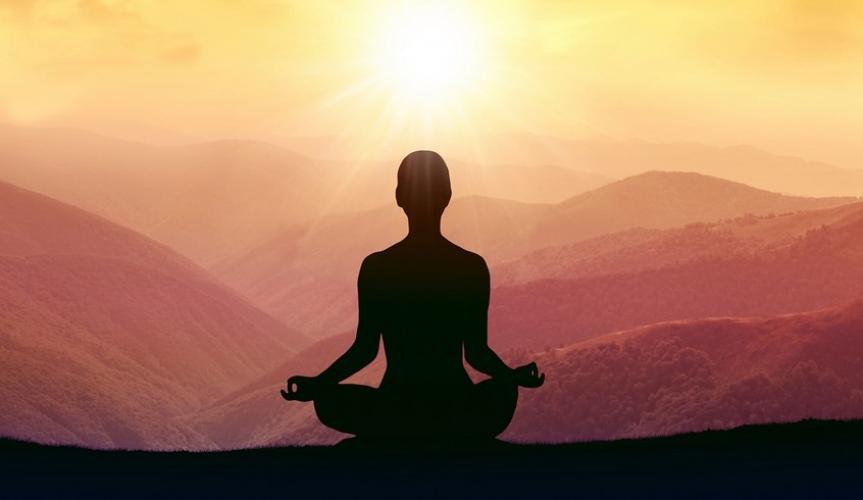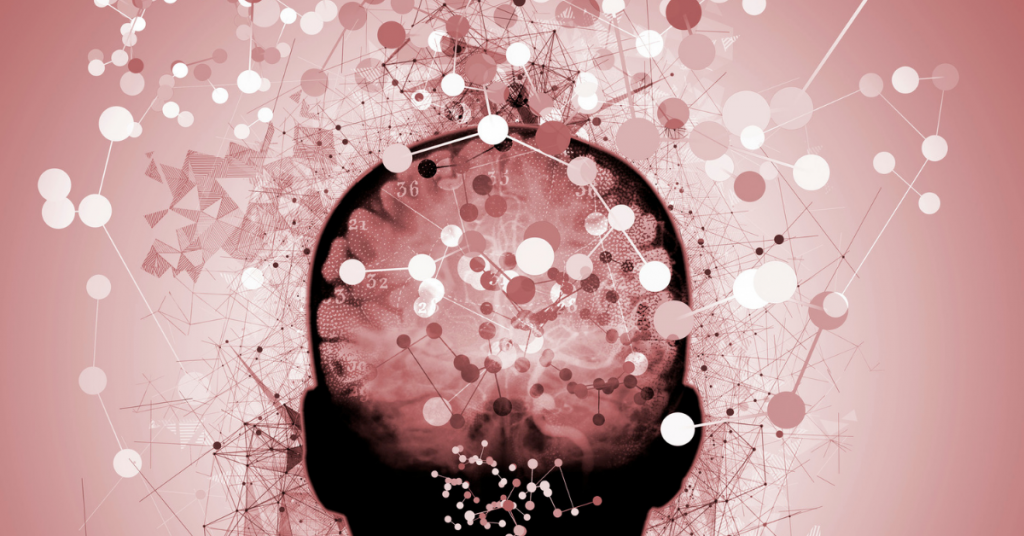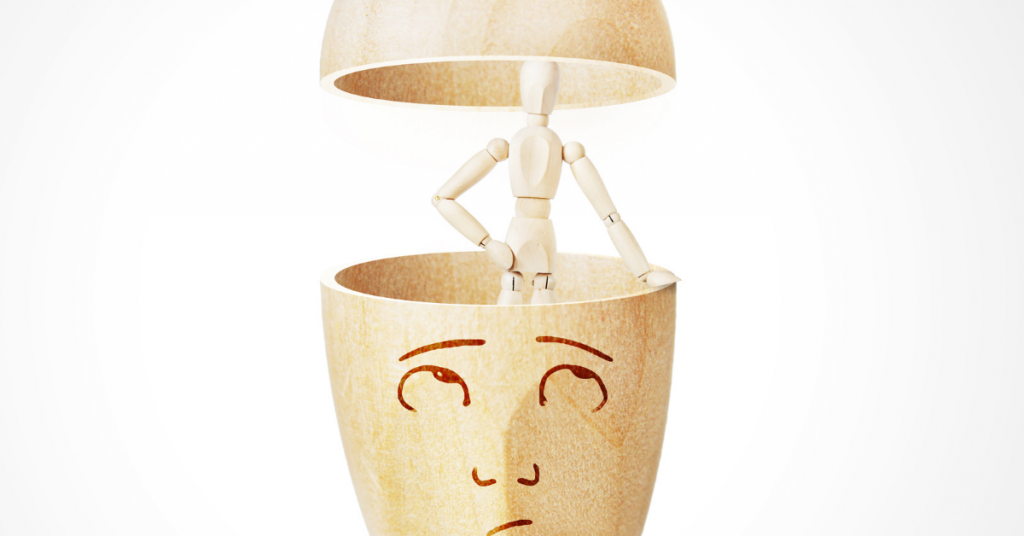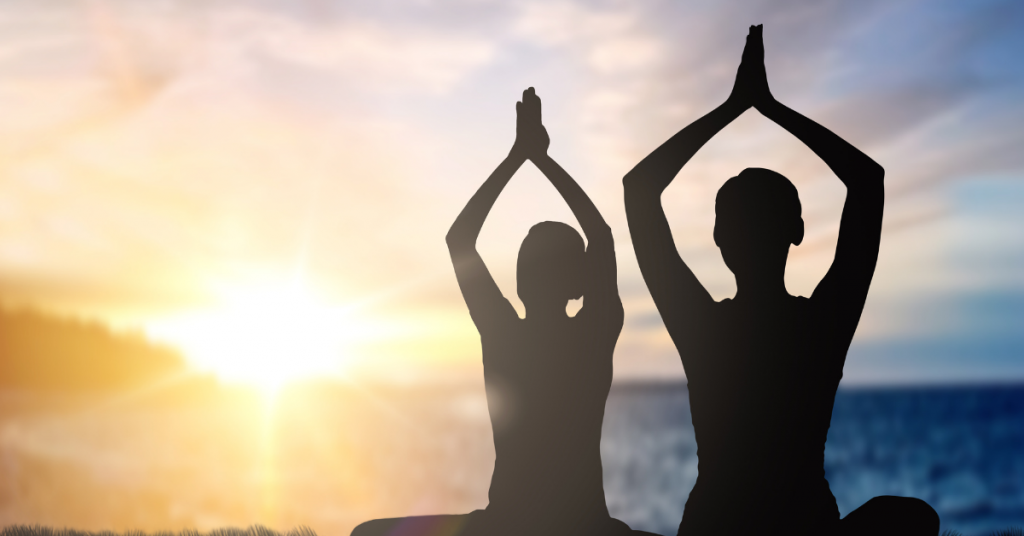Breathwork Online Preparatory Information For First-Time Participants

To View or Print This Document as a PDF: Neurodynamic-Breathwork-Online-Preparatory-Information
Below is the preparatory information for participating in one of our Online Neurodynamic Breathwork sessions. We will cover the theory behind breathwork, the principles that make it work, the types of experiences that you could have, contraindications, and how to prepare yourself for the session.
In breathwork, you are able to access an expanded state of awareness, get your monkey mind out of the way, and connect with your inner intelligence. This is the same amazing intelligence that allows our bodies to take care of all of our internal body processes every second of every day to keep us alive. We just do not normally have a conscious connection to it or it is just a very weak internal voice that is rarely loud enough to make itself heard.
By doing breathwork on a regular basis, along with profound physical and emotional releases during the sessions, you will strengthen the neural pathway to this internal intelligence and be able to access it more consistently on a moment-to-moment basis in your life by just taking a few deep breaths. Participants report experiences such as gaining important insights into issues in their lives, improving their relationships with their friends and family, feeling less isolated and more connected to the world, and, with consistent practice, being more present which makes it possible to make the best choices for themselves and their families on a moment-to-moment basis.
Principles of Neurodynamic Breathwork
The principles that make Neurodynamic Breathwork Sessions work are as follows:
First, what I call “Projection 101”. In everyday life, we tend to project the cause of our internal states and emotions onto something that has happened in the outside world. When you think about this more deeply, it is obvious that that is never the case. For example, if somebody cuts in front of somebody in traffic, one person may not be bothered at all and another person might be furious. So, it is not what actually happens in the outside world, it is what it triggers from our past and the story we create around what happened that creates the emotion.
In breathwork, it is critical to do what we call “taking it vertical”. For instance, if a piece of music comes on that you dislike, or there is an unexpected interruption at your house and you get angry, instead of projecting the cause of the anger on what happened in the outside world, just allow it to fully express itself without any judgment or suppression, and see what happens. Any emotion is always a signal from the body that something wants to get released and is a doorway to drop deeper into the process.
Second, everyone has an “inner drive towards integration and wholeness”. Just as your body possesses the remarkable ability to heal a cut, your psyche has the potential to liberate itself from the constraints of the past, enabling you to embrace self-empowerment and blast forward in your life. Energetic blocks can be released, emotional issues can be resolved, and personal power and creativity can be both restored and enhanced. You just have to breathe deeply to music to let the mind get out of the way and let your inner healing power bring up what is ready to be released without resistance. Breathwork is a modality of trust and surrender, but not to anybody else – to yourself!
Third, the only way to get beyond something is to go through it. We have suppressed so much emotional energy into our body and our psyche in our lives and this is our chance to let it out. If something comes up, let it be as big as it wants to be, do not try and suppress it. Also, let go of judging whether an experience is “good” or “bad”. That is the mind coming in again. Difficult experiences many times are the ones that lead to the greatest personal growth. There is no such thing as a ‘bad experience‘. Feeling what we might define as negative emotions, is no better or worse than feeling what we define as positive emotions. Emotions are just signals to us from our inner intelligence that something needs to be recognized. Everybody has this amazing “inner intelligence” that, among other things, manipulates our 37 trillion body cells simultaneously at every moment without taking a break. When we get a cut, does our mind figure out how to heal it? No. Our body “knows” what to do!
In Neurodynamic Breathwork sessions, participants are advised to not go into the process with any agendas and to release any expectations of what the journey will look like so that their inner intelligence can guide the journey to give them the experience that they need in that moment. The basic purpose of the breathwork journey is to build and strengthen the neural pathway that relaxes our thinking mind completely and directs the spotlight of our attention inward, toward that stream of remote associations emanating from the right hemisphere of our brain.
In contrast, when we are diligently focused, our attention tends to be directed outward, toward the details of the problems we’re trying to solve. While this pattern of attention is necessary when solving problems analytically, it actually prevents us from detecting the connections that lead to insights and intuition. When you start doing breathwork on a regular basis, you will have more access to this inner intelligence that can produce the answers to the questions that our thinking minds cannot resolve through analysis. So, just going through this breathwork experience on a regular basis produces the intended result of strengthening our access to this inner intelligence and the particular experience that you have is of secondary importance. However, breathwork experiences can be extremely profound. To provide you with an idea of what might happen in your breathwork journey, I’ll outline below the common types of experiences that participants have frequently shared.
Types of Breathwork Experiences
Many types of breathwork experiences are possible and none are better or worse than the others. Each time you do breathwork, it will be a completely different experience depending on what is up for processing at the time of the session, so it is important not to compare you session to prior experiences. Most of the experiences that participants report fall into the following categories.
- Sensory: The first type of experience is a sensory experience. All sorts of different things can happen to your body. You might feel hot, then cold, then hot again. Your body might feel completely numb. Also, there is a physiological principle that in order to get the best release, it is best to first create maximum tension in the body part in question. For example, if you want to relax your whole body as much as possible, the best way is to first tense up all of your muscles to the maximum degree and then let go of all of the tension.
In breathwork, sometimes the body will try to do this on its own. So, you might feel that your whole body is completely stiff and tense and cannot move at all. You also might get what is called tetany where your hands or toes get very stiff and in some cases, it can be painful. Your hands might look like claws with your fingers completely stiffened. This is actually a very healing experience where your body is taking energy that has been stuck in your hands or body, and is creating maximum tension which will then turn into an amazing release. The basic direction if you get tetany, is to just let it be as tense as it wants to be in order to get the best release possible. If the tetany gets painful, it is always best to try and finish the release, but if it gets to be too much, you can always slow down the breathing and the tetany will subside in a short period of time. - Biographical: The second type of experience is a biographical experience. Some people report having a visual experience of something that happened to them in their past which, at the time, they felt overwhelmed by and did not allow themselves to fully experience the emotions involved. If that happens, the direction is to let yourself fully experience whatever emotion comes up and allow it to fully express and release.
If your body wants to cry, let it cry. If your body wants to release anger, let your body make whatever sound wants to come out (screaming, growling, moaning, etc). If you are in a space where it is impossible to make loud sounds without bothering your family or neighbors, you can put a towel or pillow in front of your face and scream or growl into the pillow. You will find that in some cases, things that have been stuck in your body or psyche and have been running your life unconsciously for years, will be released, and this will make an amazing difference in your life! Also worth noting is that, sometimes your biographical memory can be perceived as images from past lives. - Perinatal: The third type of experience is a perinatal experience. Psychiatrists used to think that when we are born, we are a blank slate. The reason for that is when we are a fetus, our brains are not myelinated enough to form words or explicit memories. However, we now know that from the time we are conceived, we do form body or implicit memories. I use the model of Dr. Stan Grof, a worldwide expert in what happens during expanded states of awareness, who breaks the birth process into 4 phases, each of which has its own characteristics and energies.
The first phase of the birth process is from the time that you are conceived to the time just before the birth contractions start. Unless your mother is doing drugs or is in a state of major emotional trauma, it is a time of oceanic bliss where all of your needs are taken care of and you are just floating in warm salty water.
The second phase is when the contractions start. Just imagine that you have been in the womb for 9 months floating around in a blissful state and one day you are being compressed with tremendous pressure with your nutrition being cut off. Since the umbilical cord is being compressed also and since the birth canal has not opened yet, there is no place to go. If the energy of this has not been released, this is the energy that you will experience in times of your life when you are in a difficult situation and feel like things are terrible and will never change.
The third phase is when the birth canal opens and you start pushing your way through. This phase is characterized by aggression, overcoming obstacles, and sexuality. It is an important part of the birth process because it gives you an imprint of what it is like to overcome an obstacle and reach a goal. In this case, the goal is being born.
The fourth phase is when you are actually born and a sort of death-rebirth experience occurs. You are dying to one way of existing as a water being and being reborn into a totally new type of existence as an air being. This implicit memory can support you during times in your life when you have to let go of a part of who you are to take on something new, such as looking at the world in a different way or changing careers to something completely new. Or, taking up a new role as you become a mother or a father to your child. - Transpersonal: The fourth type of experience is what is called a transpersonal experience. This is a type of experience that is “beyond the personal,” an experience that you would generally never have in normal everyday life with your thinking mind is in control. For example, people report feeling like they are floating in the stars, or feeling more connected to everything, or seeing what is happening in different parts of the world for instance with a friend or relative and then calling later and finding out that that is exactly what was happening at that moment. People also report gaining insights into issues that have been plaguing them and holding them back in their lives.
- Yogic Sleep: The last type of experience is a Yogic Sleep State (also referred to as ‘yogic trance’), where even though it may look from the outside that you are asleep, you are not actually asleep. Instead, you go into a deep, profound relaxation. This is an amazing feeling where you generally will go into what some would call an enlightenment type of experience where you completely lose track of time and space, and afterwards, you will feel very relaxed and present.
The Role of Music During Breathwork Sessions
Music can deepen your experience and is a big part of the experience and this is where Neurodynamic Breathwork really shines. I have researched breathwork music and what works best with thousands of participants over a period of 10 years and I only use the most effective music tracks in these sessions. However, it’s crucial to emphasize again that the significance of Breathwork doesn’t lie solely in the specific experience. While participants may experience profound healing and gain deep insights during their sessions, the true essence of creating lasting positive change lies in the consistent reinforcement of neural pathways to one’s inner intelligence through a regular breathwork practice.
The “Two Fears” in Breathwork
People generally have two fears in breathwork sessions and the first is overwhelm or experiencing ‘too much’. In regards to having too much happen, your amazing inner intelligence will generally only bring up what is ready to be processed. That being said, even though it is generally suggested to allow things to be as ‘Big’ as possible and let them process through and release, if you ever feel unsafe, you should bring it to the attention of the online facilitator immediately via online chat. You can also lower the intensity of the experience and drop out of the process in a relatively short period of time by slowing down the breath to a normal rhythm. In breathwork, safety always comes first.
The second major fear is that nothing will happen. In regards to nothing happening, you will generally know that you are on your journey of inner awakening when the little “chit chat” thoughts of the monkey mind die down and you become more calm and present. If, after 5 or 10 minutes you feel that you are still completely aware of being in your room, your mind chatter is still strong, and you feel that “nothing is happening,” what I recommend is to drop into whatever emotion you are experiencing around that. It will generally be frustrating. But, whatever it is, let it be as big as it wants to be! For example, let yourself be the most frustrated you have ever been and make that feeling as big as possible, and SOMETHING will happen. Another technique that helps is making whatever sound your body wants to make. Sound is an amazing way for your body to release and to drop into the process.
Confidentiality
Confidentiality is important in our breathwork sessions so that all participants feel safe to share their experiences and be fully self-expressed. In order to be allowed to participate, everybody must agree to not discuss any other participant’s experience or anything that another person shares in a way in which that participant can in any way be identified; and also to not audio or video tape any portion of the session. This agreement is also written into the release form that you will read and agree to during your registration process.
The Breathing Technique
The breathing technique will be discussed at the beginning of each breathwork session but the basic concept is as follows:
There is no absolutely correct way to breathe. The general instruction is to breathe “deeper and faster”. But at the beginning, to help you drop quickly into the process, we recommend the following. First, I recommend that you start with breathing in and out through your mouth. It is easier to move air quickly this way, and also whenever you are in an emotional state, you always breathe through the mouth, so breathing through the mouth in your session may support your body in releasing blocked emotions. If, after you get started, you find breathing through your mouth is too uncomfortable, you can also try nose breathing.
Second, you want to do diaphragm breathing. This involves breathing deeply into your lungs where when you breathe in, your belly moves out a bit, and when you breathe out, it moves back in. Normally in life, we breathe in a very shallow manner where only our chest moves, so this will be a very different breathing technique than your normal everyday breath. Also, you want to do what we call circular breathing where there is no pause at the top or bottom and you are creating a beautiful circle of breath and maintaining an even breath, with equal emphasis on the in-breath and the out-breath. If you want to practice this, try putting a hand on your belly, breathe deeply, and see if your hand gets pushed out. If you practice taking full deep circular breaths in this way for even a minute or two, you will feel your consciousness start to change.
Preparation for the Breathwork
The preparation required is as follows:
First, it is advised not to have a meal just before breathing. Some people find that it is helpful not to eat anything for at least two hours or even longer before the session. If you are breathing in the morning, it can be helpful to postpone your breakfast until after you breathe. You can play with this and see what works for you, everybody is a bit different. However, it is more difficult to drop into the Expanded State of Awareness if your stomach is overloaded and all of your internal energy is focused on digestion.
You will be able to do the session either sitting in a chair or lying down. In terms of sound quality, over-the-ear headphones are ideal, earbuds also work, or if you have a computer with great sound and the neighbors don’t mind loud music, that is fine also. If you use a cell phone, earbuds or earphones will be a necessity to get good sound quality. Also, the better the internet connection, the better the sound quality will be. WiFi is good, hard wired connection is better if that is a possibility. Cell phones without a WiFi connection may not have a good enough connection to work unless you are in a very strong reception area. If you are planning on using a cell phone please make sure to install the Zoom app (available in the app store) before the session.
It’s also important to make sure you will not be disturbed during the session. Turn off your phone, put a “do not disturb” sign on your door if there are other people in your house or apartment, etc. An eye mask can also be helpful, or you can just close your eyes if you prefer but using an eye mask is strongly recommended as it will generally support you in dropping more deeply into the process. If you continue with this work, the eye mask I recommend is called a Mindfold Sleep and Relaxation Mask which can be purchased on Amazon but any eye mask or blindfold will do. Addition recommendations include having Kleenex tissues, a bottle of water, and a blanket close by, and a cup in case you have to spit, etc. If you are lying down, please make sure to have enough space around you so that if you move around, you do not bang into anything, especially around your head area.
Sitters
It is not required in any way but if your “inner intelligence” is guiding you to have someone there with you to quietly sit beside you during your session, that is an option. Sometimes, it can be nice to have somebody there to hold your hand, etc. if you feel the need for support during your session. If you do decide to have someone there, though, it is important to instruct them to not interfere in your process in any way unless you specifically ask for help or support. Sometimes sitters can get “triggered” if you are crying or doing something where they feel that you need help, where in actuality, they have no way of interpreting what is actually happening in your process. Make it clear that their job would be to hold space for you and to intervene only if you specifically request it.
Drugs and Alcohol
We ask that you agree not to mix mind-expanding drugs and/or alcohol with breathwork. Breathwork is meant to stand on its own and part of the benefit of the experience is that you start to gain more confidence that everything you need is already within you! Besides, you do not need substances to access the wonderful inner guidance that everybody has, the breath will connect you.
Integration – If You Need Support, Ask for It!
The integration process after your breathwork experience is also very important. After each breathwork session, there is time for participants to share their experiences if they choose to and the Facilitator will stay on the call long enough to answer whatever questions people have about their experiences.
If you are unsettled or feel incomplete after your session, we request that you either stay on the Zoom call and get support from the person facilitating the session or email us as soon as possible after the session at: integrationsupport@breathworkonline.com. We will either email back or, if necessary, set up a one-on-one Zoom conference to support you.
Also, there are some basic integration suggestions on our website at: breathworkonline.com/integration-suggestions.
Contraindications
The last thing is that there are certain medical conditions for which it is not considered safe to participate in this type of breathwork. Please do not register for one of these breathwork sessions if you have any of the following conditions or situations: Pregnancy, epilepsy, a detached retina, glaucoma, uncontrolled high blood pressure, cardiovascular disease including prior heart attack; prior diagnosis by a Medical Professional of manic disorder; bipolar disorder or schizophrenia; strokes, TIAs, seizures or other brain/neurological conditions; history of aneurysms in your immediate family; use of prescription blood thinners such as Coumadin; hospitalization for any psychiatric condition or emotional crisis within the last ten years; osteoporosis that is serious enough whereby intense movement could cause physical issues, and prior physical injuries that are not fully healed and could be re-injured through intense movement.
Note: if you have asthma, it is fine to participate but we ask that you have an inhaler within reach just in case.
Final Note
I do not recommend doing breathwork by yourself at home without having access (either in-person or online) to a trained facilitator. Finally, if you have any questions, please contact me at Michael.Online@HolotropicBreathworkLA.com. I look forward to interacting with you at an online Neurodynamic Breathwork Workshop soon!
Blessings,
Michael Stone






